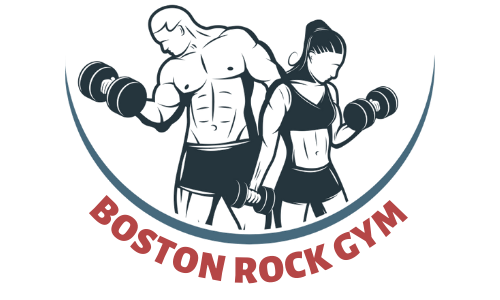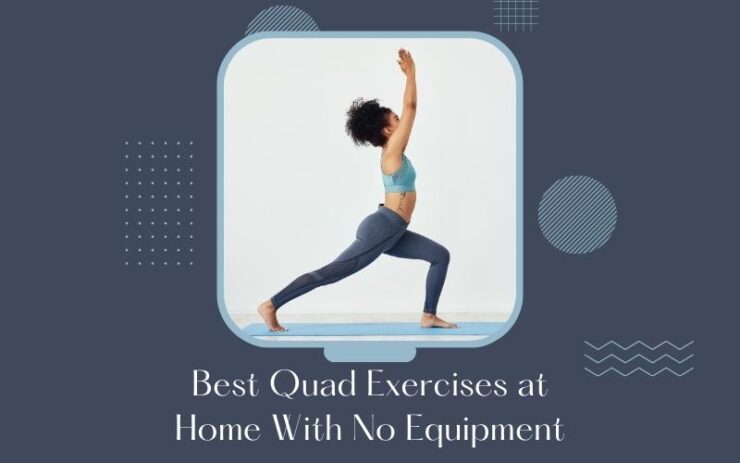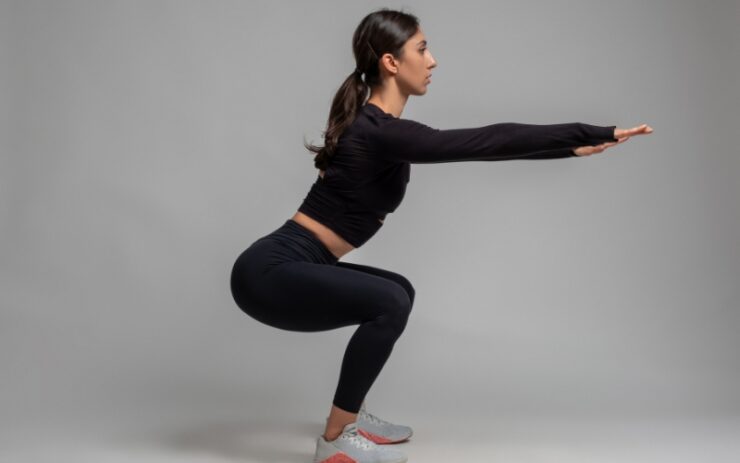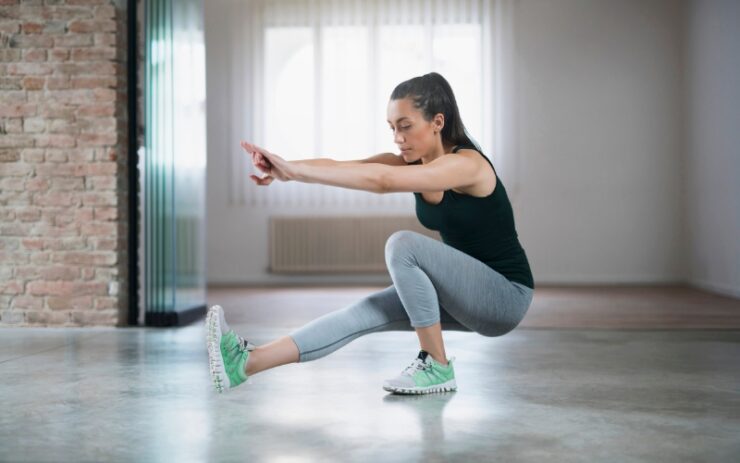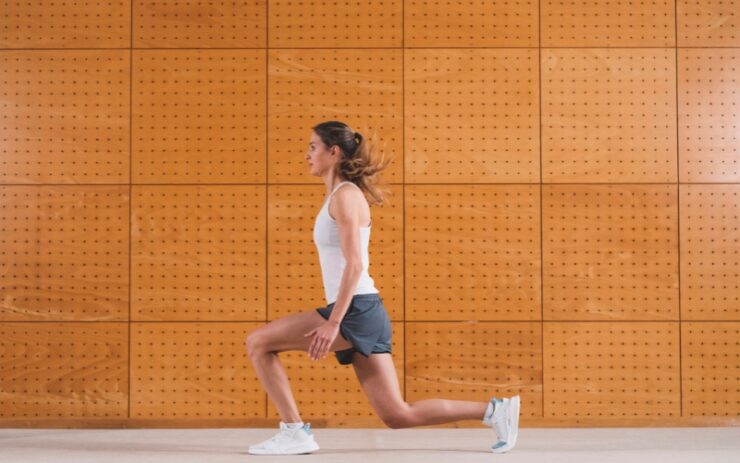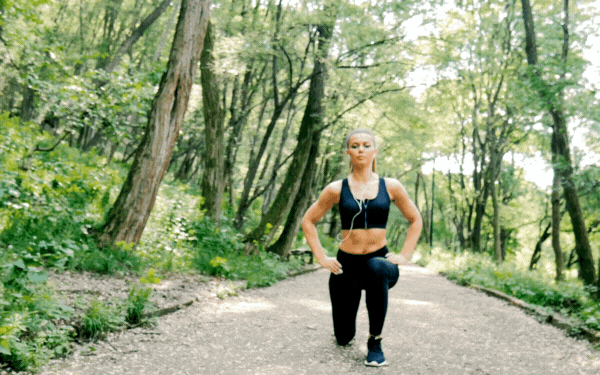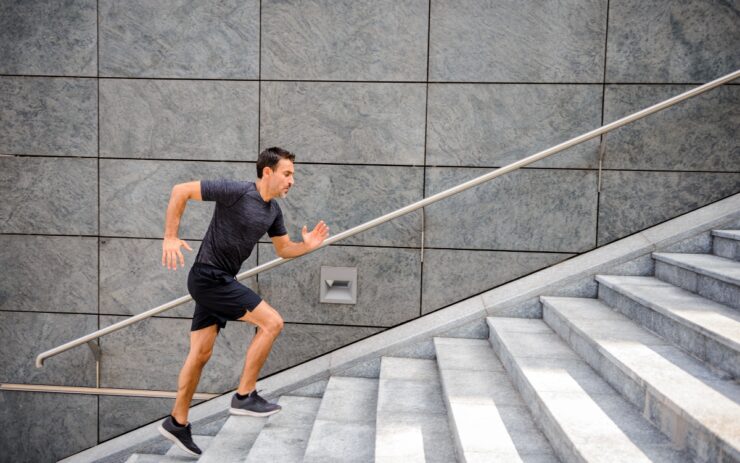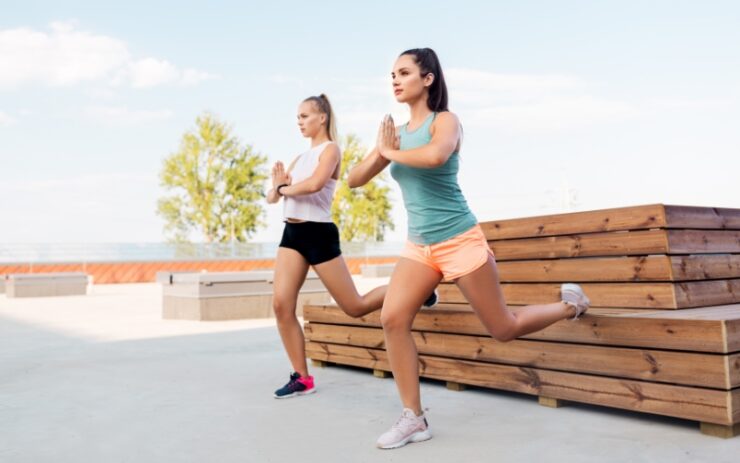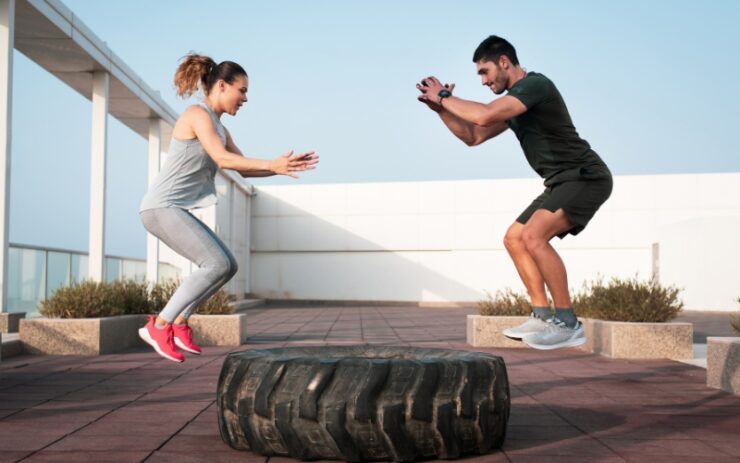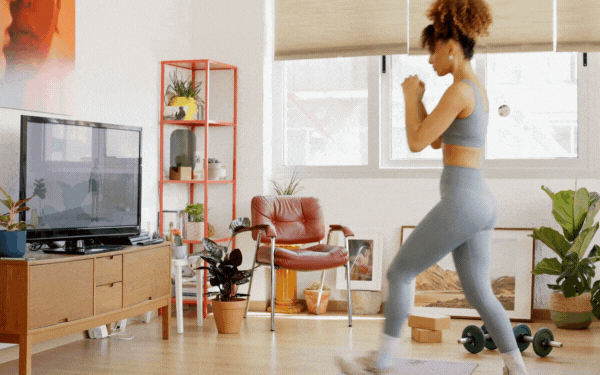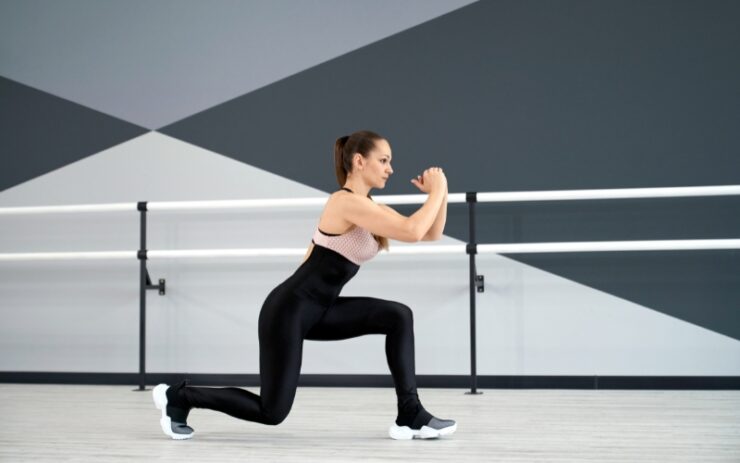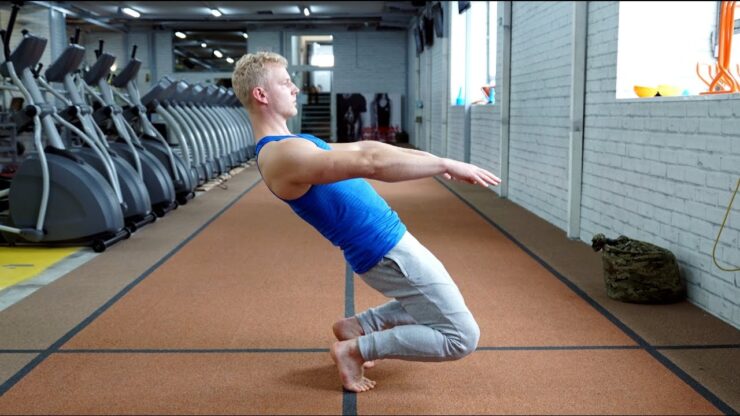Working out at home without equipment can often be challenging, especially if you want to work on a specific muscle group. Going to the gym, however, isn’t always an option, so there is often a need to get creative with at-home workouts.
Thankfully, you’re not alone in this! We’re here to help you make your quad exercises at home with no equipment not only possible but also quite simple and easy!
Since searching for answers online would take quite a lot of time, considering you would likely encounter millions of results with incomplete and confusing info, we did the research for you.
We also summarized the info into a neat list of the top 10 best quad exercises you can do at home with no equipment necessary! All you need to do is read our list and start working out like a pro in the comfort of your own home.
Contents
Top 10 Best Quad Exercises To Do at Home – No Equipment Necessary
1. Bodyweight squat
One of the finest workouts for overall lower body and core strength is the bodyweight squat. Reduce the depth of the squat to make the exercise simpler if you initially find it to be too difficult. The muscles targeted include the spinal erectors, glutes, hamstrings, and quadriceps. Here’s how to do this exercise:
- With your toes pointing slightly outward, place your feet shoulder-width apart. You can join your hands in front of you, position them on your hips, or maintain your arms at your sides
- Move your hips back as if you were sitting in a chair while maintaining a strong core and a raised chest
- Once your thighs are parallel to the floor, stop and take a moment to breathe
- Till you’re back in the beginning position, drive through your heels
2. Single-leg squat
If you want to optimize leg growth using only your body weight, you must perform this exercise. Compared to a straightforward two-legged squat, it allows far more overload.
And if you decide against doing an aided variation, balance is still necessary. This is completely acceptable and ideal for enhancing stability and balance.
You can, however, lightly hold a solid item for support if you prefer to avoid having to worry about balance. To perform it, follow the next steps:
- Maintain a straight posture and a firm core
- Squat down with just one leg till your upper leg is parallel or a bit lower, then elevate the other leg in front of you
3. Walking lunge
A quick workout that improves your leg and core strength is the walking lunge. You can simplify it by merely lunging halfway down. Using dumbbells will increase the difficulty, but they are by no means required. Here’s what you should do:
- Put your feet shoulder-width apart and stand tall. If you’re carrying dumbbells, keep your hands by your sides and place them by your sides or at your chest
- Step forward with one foot, then lean forward until your back shin is parallel to the ground and your front knee is 90 degrees
- Prior to actually taking a lunging step forth with your opposing foot, pause for a second.
- Continue lunging forward while switching sides
4. Levitation squat
A different way to do the single-leg squat is to do the levitation squat. However, balancing without holding onto anything is significantly simpler. The development, balancing, and stability of unilateral development are so greatly enhanced. To accomplish it, do this:
- Hold your arms out in front of you while standing on one leg while bending the other
- Squat till your bent knee is only a few inches or touching the ground
- Regain your balance while you repeat the exercise for each rep, then transfer to the other leg for each set
5. Step-up
Step-ups are a wonderful exercise for strengthening your knee stability. The practice can be made simpler by using a lower box. These are the steps to follow:
- Find a solid surface that is roughly knee-high, such as a box, step, or anything similar
- Step up while placing one foot on the item, trying to prevent your knee from collapsing inward and keeping it in line with your ankle
- When you step up, concentrate on pushing through your heel and maintain a tall posture while you lift your opposing knee until it is at hip level
- Retrace your steps, then rise up on the other foot. Throughout the duration of your set, keep alternating
6. Bulgarian split squat
The Bulgarian split squat is a fantastic exercise for concentrating on one leg only. Additionally, if you are in possession of free weights, it’s one of the single-leg workouts we advise packing on extra weight.
Additionally, because this exercise involves balance initially, we also advise performing it with no additional weight. Try doing it one way, without weights, then the other way, using weights. Here’s what you should do:
- Stand away from a bench, chair, or another similar platform
- Move the other leg out in front of you a few feet, placing the top of one foot on the item while attempting to maintain a vertical shin
- Drive back up through your heel after squatting down until your upper leg is parallel to the ground or just slightly below
- After finishing your repetitions, switch to the other leg and continue
7. Squat jump
Squat jumps are a fantastic workout for developing strength in your lower body. You can begin this exercise with 5 repetitions each set rather than 10. Because you must balance and maintain your body weight when performing squat jumps, your core gets stronger as a consequence of the increased muscular stability.
Squat jumps also provide for better posture, which is very beneficial if you’re sitting or lying down a lot. The gluteal, quadriceps, calf, and core muscles are all worked. Follow the next steps to do this exercise:
- Squat down and place your hands in front of you with your feet shoulder-width apart
- When your thighs are nearly parallel to the floor, squat down until you are ready to leap up with force
- Before repeating, softly land with your knees slightly bent
8. Lunge
The lunge is most likely the best single-leg lower-body exercise that enables you to keep your balance. That is the case as the ground is under both feet.
It strengthens the entire leg and works the glutes or butt in particularly well. The lunge has so many wonderful variants, but this is the most fundamental one. Follow these instructions to do it:
- Place your feet shoulder-width apart as you stand
- Step one leg forward until it is bent at a 90-degree angle, or a little less
- Repeat with the second leg, driving up through your heel until you are back in the beginning position
- Once you’ve finished the required amount of repetitions, switch legs
9. Reverse lunge
Reverse lunges are a type of classic lunge that provide you additional stability in your lead leg, which helps you maintain balance.
When done correctly, reverse lunges can increase your cardiovascular health while also assisting in the development of single-leg strength. A barbell or heavy dumbbell held at your sides may make the reverse lunge an efficient muscle-builder as well.
They may be made simpler by merely lunging halfway down. What you should do is:
- Placing dumbbells at your sides or putting your hands on your hips, stand tall
- With one foot, take a large stride backward. Your lead thigh should be parallel to the floor when you crouch down. Almost touch the ground with your rear knee
- As you take a step back to the starting position, push through your front heel
- Repeat while swapping sides every time for the specified amount of repetitions
10. Sissy squat
Sissy squats are a great exercise for overloading the quadriceps. The only potential downside is that, like the leg extension, it may exercise somewhat taxing on the knees. You may perform this workout while standing or while holding onto anything. To perform it, either stand on something sturdy or hold onto it for support, then follow the next steps:
- Maintain a tight core while standing with your feet at around shoulder width
- In order to go back to the beginning position, flex your knees, lean back, and then push your feet into the ground
To maintain the health of their knees, beginners should refrain from bending too much. Start with a range of motion that is half of what is usual, and then progressively extend it. Before performing these, warm up by engaging in some mild aerobic and bodyweight squats.
Conclusion
No matter how difficult or scary doing the above-listed exercises may seem, you should know that once you make them a part of your daily routine, they become a lot easier.
More importantly, you will start seeing the results quickly if you stay consistent and honor your daily workout routine, so make sure you do that and enjoy the results!
